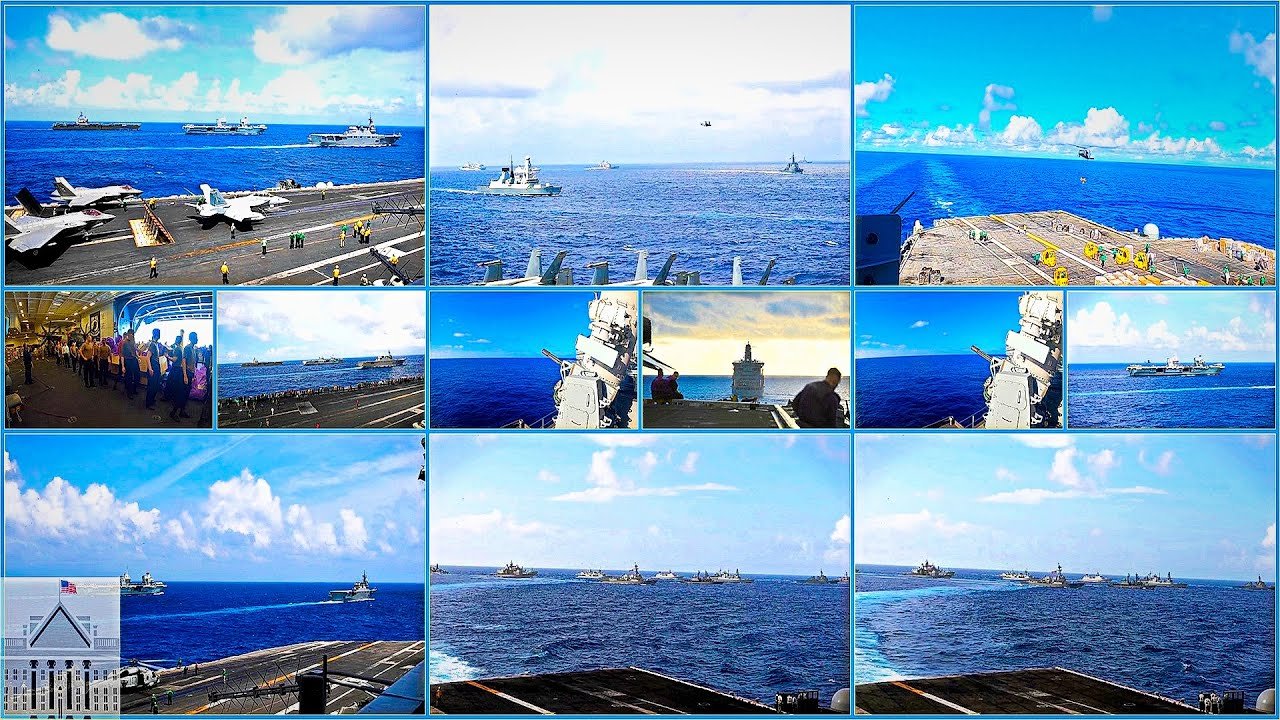China ‘Dangles’ Aircraft Carrier-Killer Missiles After US Navy Deploys Carl Vinson CSG In South China Sea, An incensed China has targeted the US for deploying its Navy’s USS Carl Vinson carrier strike group (CSG) in the South China Sea.
The Chinese Communist Party’s mouthpiece, Global Times, fired verbal shots at the US from the shoulders of two Chinese maritime analysts, claiming the US Navy was no match for the anti-carrier warfare capabilities of the People’s Liberation Army.
The Chinese experts quoted by Global Times claimed Beijing commanded military superiority in the western Pacific, where American carriers are vulnerable to long-range missile strikes.
The experts, as expected, slammed the US for the provocative move (CSG deployment) in the South China Sea and claimed that it was aimed at stoking tensions with the Philippines. Vietnam, Malaysia, Taiwan, Japan, and the Philippines have contested China’s territorial claims in the South and East China seas.

Chinese and Philippine coast guards have challenged each other over Manila resupplying its naval unit at Ren’ai Jiao (also known as Ren’ai Reef) by sending materials to reinforce an old warship that ran aground there years ago.
Tensions in the western Pacific have been unprecedentedly high, with all three flashpoints of the Korean Peninsula, the Taiwan Straits, and the SCS being active with confrontations between the US-Japan-Taiwan-South Korea camp and the opposing China-Russia-North Korea grouping.
US Carrier Strike Group In The South China Sea
According to the US’s Indo-Pacific Command (INDOPACOM), the USS Carl Vinson CSG is “currently operating” in the SCS following a successful port visit to Singapore.
The flotilla conducted “maritime security operations,” including “flight operations with fixed and rotary wing aircraft, maritime strike exercises, and coordinated tactical training between surface and air units.” The CSG’s presence in the SCS and the subsequent exercises are “part of the US Navy’s routine presence in the Indo-Pacific.”
Besides the carrier, the CSG consists of five guided missile cruisers and destroyers, including the Ticonderoga-class USS Princeton, Arleigh Burke-class destroyers USS Hopper, USS Kidd, USS Sterett, and USS William P. Lawrence.
Before entering the South China Sea, the CSG participated in a trilateral maritime exercise with the Japan Maritime Self-Defense Force (JMSDF) and the Republic of Korea Navy to “conduct enhanced planning and advanced maritime communication operations.” Pictures released by the USN also showed the USS Carl Vinson firing an MK 15 Phalanx Gatling-gun close-in weapons system (CIWS).
China Infuriated By US Navy Deployment
While China strongly reacted to the American fleet’s presence, its experts downplayed the naval maneuvers, saying they served a more “symbolic” and “political” goal rather than a concerted military intent.
A Global Times report quoted Chen Xiangmiao, director of the World Navy Research Center at the National Institute for South China Sea Studies, who said, “US aircraft carrier activity in the South China Sea is nothing new. Such moves usually attempt to deter China and show support to US allies so that the US can consolidate its hegemony.”
He said while US carriers “still operate” in the SCS, they tend “not to stay” for “too long” because the US Navy “understands” the Chinese military’s “capabilities in targeting large moving warships on its doorstep.”
This “significantly reduces” the “survivability” of aircraft carriers, he said, adding that “thus, USN carriers in the SCS serve more as “political and diplomatic tools” than “actual military instruments.”
Meanwhile, China’s Ministry of Foreign Affairs slammed the Philippines for “provoking” the conflict by trying to control the disputed area and changing the status quo. MFA spokesperson Mao Ning said the face-off between the coast guard vessels was caused by the Philippines’ “change of policy and position” and “violating” the Declaration on the Conduct of Parties in the South China Sea.
“We hope that the Philippines returns to dialogue and consultation and work with China to handle and manage the situation at sea properly.” This statement came a day before the Global Times article on the Carl Vinson CSG deployment. The MFA spokesperson did not mention the US in her reply to a question on the Philippines maritime dispute.
Defense Now – December 2023
https://www.youtube.com/playlist?list=PLe95fdmDwNk_cmE0IfvFhpNflkx2wP9hk
#China #MissileShowoff #SouthChinaSea #USNavy #RisingTensions #Military #NavalPower #Geopolitics #GlobalConflict #Defense #InternationalRelations #AsiaPacific #Security #ArmsRace #TerritorialDisputes #MilitaryShowdown #PoliticalTensions #MaritimeSecurity #PowerProjection #GlobalSuperpowers
source










